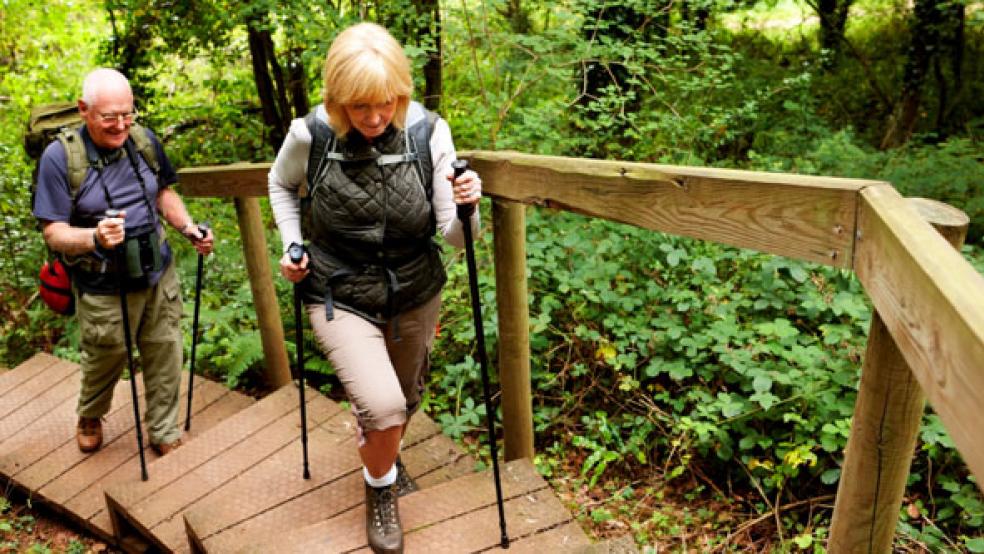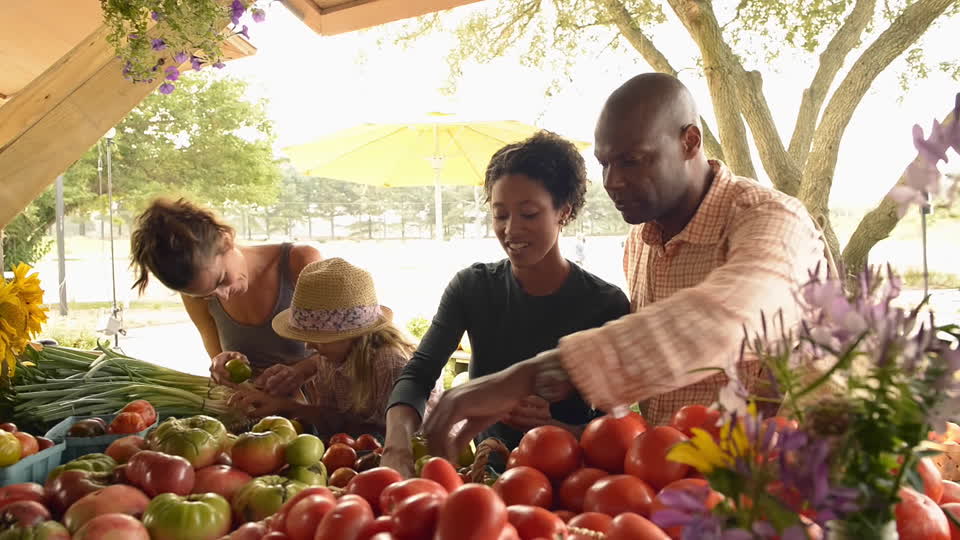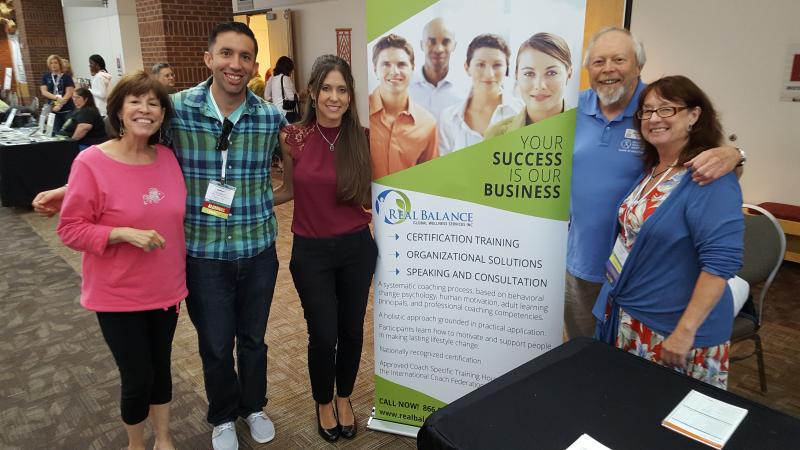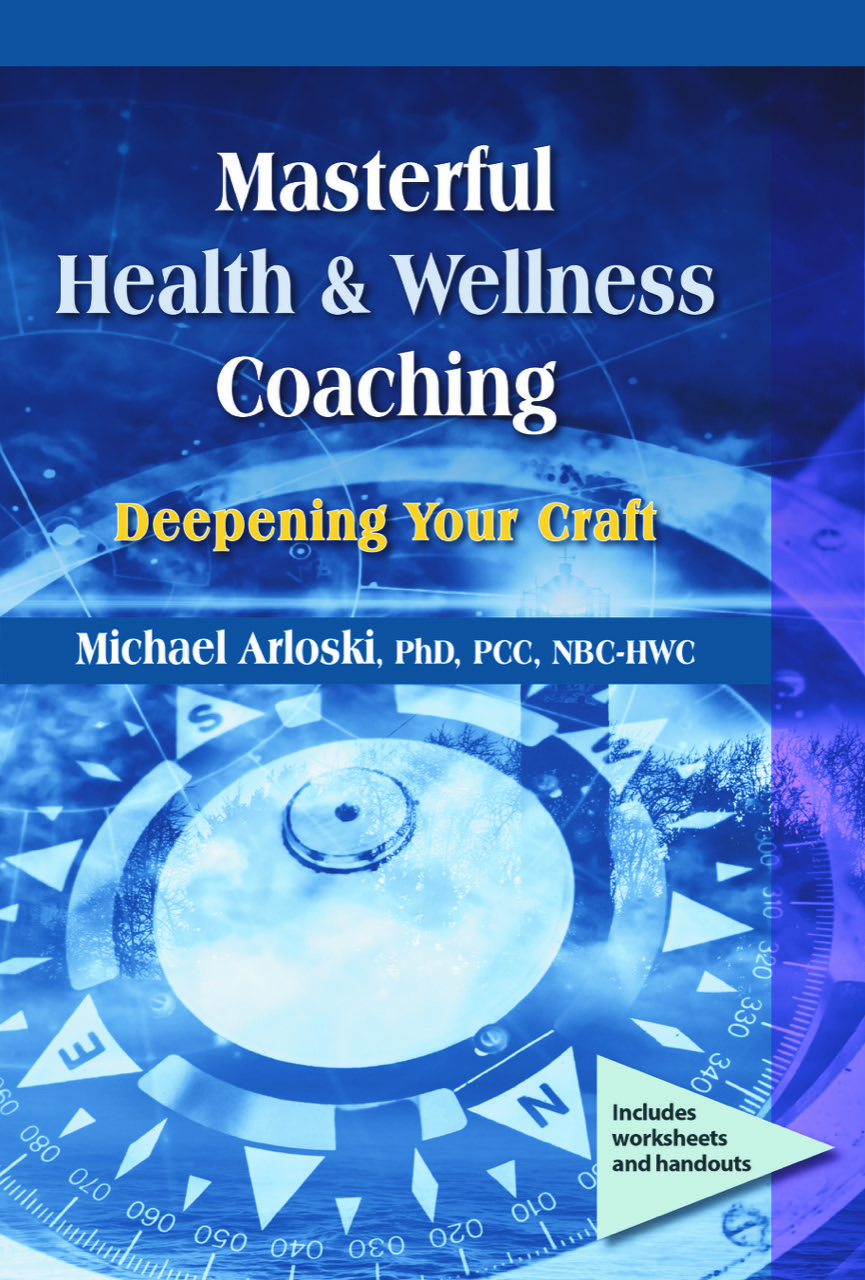“Coaching for a Lifetime of Wellness: Five Keys to Sustainable Behavioral Change”

The theme of the 41st Annual National Wellness Conference was “Spotlight On Sustainability”. While we often think about sustainability and our environmental practices, as a wellness coach and psychologist I immediately thought of sustainable behavioral change. As I prepared for my presentation on this topic my research revealed that we actually know very little about how effective our efforts at helping people improve their lifestyles actually are.
Maintaining success at lifestyle change is often daunting. Most wellness coaching clients have a history of initiating efforts at losing weight, stopping smoking, managing stress, etc. For many, however, there is a trail of failures at maintaining those new ways of living in the long run. The result is a lowering of self-efficacy and lingering feelings of discouragement. As I explored in a previous blog post “Lessons From Albert Bandura For Wellness Coaches” (http://wp.me/pUi2y-dB) there is much for coaches to learn about self-efficacy.
When we go to trusted sources looking for help with making healthier behavior last, what do we find? Unfortunately, not much. From Harvard Medical School’s online publication Healthbeat I found “The Trick To Real And Lasting Lifestyle Changes”. (http://www.health.harvard.edu/healthbeat/the-trick-to-real-and-lasting-lifestyle-changes) Though this title sounds like the exact resource to look for, all it advised was a simplistic review of SMART Goals.
Turning to the APA Psychology Help Center we find “The key to making lasting lifestyle and behavioral changes: Is it will or skill?” (http://www.apa.org/helpcenter/lifestyle-behavior.aspx) This disappointing short article could only offer this: “Lasting lifestyle and behavior changes don’t happen overnight. Willpower is a learned skill, not an inherent trait. We all have the capacity to develop skills to make changes last,” said Katherine C. Nordal, PhD, executive director for professional practice at APA. “It is important to break down seemingly unattainable goals into manageable portions.” The article mostly talked about how ineffective we are at making any changes in our behavior and did not even address making changes last!
As I deepened my research quest I found that other behavioral scientists had been concerned enough about this issue to establish an impressive research consortium to tackle it. The result was a publication in The American Journal of Health Behavior (2010 Nov-Dec; 34(6): 647–659) entitled The Science of Sustaining Health Behavior Change: The Health Maintenance Consortium. The authors (Marcia G. Ory, PhD, MPH,1 Matthew Lee Smith, PhD, MPH, CHES, CPP,2 Nelda Mier, PhD,3 and Meghan M. Wernicke, MPH4) did a thorough research synthesis of articles spanning 2004-2009, amassed resources and funded twenty-one projects to look at this issue of lasting change in health behavior. Here is what they concluded.

What we are up against when it comes to lasting change.
• How long can positive gains be sustained without additional long-term support?
• In most cases this is unknown because studies only track maintenance for a year or two after the post-intervention phase.
• In the majority of cases, intervention effects on lifestyle behaviors are often strongest in the one or two years closest to active intervention.
• Without additional support, positive effects tend to diminish over time, or treatment differences vanish.
What they found was frankly, not a lot.
• It’s not realistic to expect long-term maintenance based on initial interventions. (Single-variable research)
• Moderate-intensity behavioral interventions may need to be coupled with more environmental changes to sustain long-term effects.
• In other words people need the support of healthier communities and workplaces, peer groups, etc.
• Incorporation of physical activity into the self concept emerged as the strongest predictor, with self-efficacy having a major indirect influence confirming it as an important predictor for both behavioral initiation and maintenance
 In summary: The authors conclude that no single mediator makes a large impact; rather, there is a “long and winding road” with maintenance achieved through a multitude of modest interrelated meditational pathways from behavioral initiation to maintenance.
In summary: The authors conclude that no single mediator makes a large impact; rather, there is a “long and winding road” with maintenance achieved through a multitude of modest interrelated meditational pathways from behavioral initiation to maintenance.
There are many reasons for our scarcity of knowledge. One is that much research of this nature is done by universities where graduate students need short-term projects that allow them to finish up and…graduate! We may learn more from larger sociological and epidemiological studies such as The Framingham Study (https://www.framinghamheartstudy.org , the work of The Blue Zones, (https://www.bluezones.com) etc. However, here we are not isolating variables. We can’t really say if it was the plant-based diet, the supportive extended family, or the red wine that made the healthy difference. It seems we have to be satisfied with the shotgun approach and put our best bets on culture and environment.
What can we conclude about making positive changes in health and wellness behavior last?
• Changes must be sustainable over a lifetime
• Intrinsic motivation trumps extrinsic every time
• Most research looks at single interventions and doesn’t track more than one or two years
• Long-term studies show that a combination of environmental support and “internal” shifts sustain lifestyle improvement better. Culture, environment, attitude and beliefs!
• We must ask how can coaching support shifts towards “well” attitudes and beliefs?

The Five Keys of Coaching For A Lifetime of Wellness
• 1. Build Self-Efficacy
• 2. Nurture Visionary & Intrinsic Motivation
• 3. Focus On The Maintenance Stage (TTM)
• 4. Co-create Relapse Prevention Strategies
• 5. Coach For Connectedness
1. Build Self-Efficacy
Bandura’s Social Cognitive Theory (formerly AKA Social Learning Theory) shows tremendous congruity between it and the foundational principles of coaching. Bandura deeply explored the concept of Self-Efficacy which is foundational to wellness coaching. (Again see the previous blog post “Lessons From Albert Bandura For Wellness Coaches” (http://wp.me/pUi2y-dB)
2. Nurture Visionary & Intrinsic Motivation

Much of our coaching work is around helping people to envision the outcome they want. When we have a clear picture of both where we are (our current state of wellness) and where we want to be (our Well Life Vision) we can “coach to the gap” between the two and coach around what needs to change to attain that Well Life Vision. Such a positive psychology approach is foundational to coaching and motivates better than just fear and illness avoidance.
We know that when clients experience intrinsic joy in activities they will be more motivated to engage in them. Look at the work of Jay Kimiecik, The Intrinsic Exerciser: Discovering the Joy of Exercise: ( https://www.amazon.com/Intrinsic-Exerciser-Discovering-Joy-Exercise/dp/061812490X) and Daniel Pink’s book Drive: The Surprising Truth About What Motivates Us (https://www.amazon.com/Drive-Surprising-Truth-About-Motivates-ebook/dp/B004P1JDJO/ref=sr_1_1?s=books&ie=UTF8&qid=1467763122&sr=1-1&keywords=Daniel+Pink+drive#nav-subnav).
To COACH for intrinsic motivation:
* Notice! – Help your clients to focus on the enjoyment, the pleasure that they perceive as they are performing the behavior.
* Inquire! – Ask about the details of their experience. When a client reports about taking a walk, hike or bike ride outdoors ask about what they saw, what they experienced, what they felt.
* Inquire about Bonus Benefits. Clients sometimes fixate on their goal of weight loss for example, but what else is happening during their efforts? Are they experiencing more energy? Better sleep? More mental concentration?
* Avoid incentivizing. Incentives tend to decrease intrinsic motivation.
* Take a Kai Zen Approach. (https://www.amazon.com/Small-Step-Change-Your-Life-ebook/dp/B00GU2RHCG/ref=sr_1_1?s=books&ie=UTF8&qid=1467763620&sr=1-1&keywords=robert+maurer#nav-subnav) Coach with your client to set up action steps that are so small that they are very doable and allow continuously successful progress towards their goals.
3. Focus On The Maintenance Stage (TTM)
Of all of the Stages of Change that Prochaska talks about in his Transtheoretical Model of Change (https://www.amazon.com/Changing-Good-Revolutionary-Overcoming-Positively-ebook/dp/B003GYEH2Y/ref=sr_1_1?s=books&ie=UTF8&qid=1467763816&sr=1-1&keywords=prochaska+changing+for+good#nav-subnav), coaching around the Maintenance Stage may be the most vital. Here the coach again takes a positive psychology approach and acknowledges and reinforces what is working. As the old saying from coaching goes “Nothing succeeds like success!” A key in this stage is for the client to see the value in Tracking Behavior and to do it regularly. Avoiding self-deception is key. Use whatever works for keeping track of new healthier behaviors: calendars, charts, apps, activity monitoring devices, etc. Then the Accountability that coaching provides makes the process conscious, deliberate and increases consistency. Lastly, coaches really prove their worth here as they coach their clients through the barriers and the “push-back” that sometimes is received by those who clients were hoping would provide support.
 4. Co-create Relapse Prevention Strategies
4. Co-create Relapse Prevention Strategies
Relapse happens! Count on it! James Prochaska is fond of back-up plans. We all know that life throws us curve-balls all the time. Our best-laid plans run up against life realities. This is where coaching can get creative! Coach clients to come up with their own back-up plans for then things don’t go as they would like, or when temptation increases. Going to a potluck dinner where the dietary direction of friends tends to be sabotaging of your wellness efforts? Be sure to bring an entrée to share that will satisfy your own needs. Not enough time to do your hour-long exercise routine? Having a quick and simple set of exercises you can do anywhere fills in “better than nothing” and maintains engagement in your program.
Pivotal to this key is self-compassion. There is a real difference between excuse-making and true compassionate understanding. Coach your client to be less self-critical and more forgiving. Help them keep a healthy perspective on their wellness plan.
5. Coach For Connectedness
 Real Balance Faculty At The National Wellness Conference
Real Balance Faculty At The National Wellness Conference
In our Real Balance Wellness & Health Coach training we emphasize coaching for connectedness from day one. The amount of time any client spends in coaching is a brief moment compared to the lifetime they have to live in a new way. In addition to the support of the coach, other sources of support must be encouraged, discovered or consciously developed. For each step of action we ask “Who or what else can support you in this?” If our client has little support then making the development of such support a deliberate area of focus to work on in coaching is vital. This is where the role of culture, community, workplace, peer groups, family, friends, and relationships becomes a part of coaching that cements lasting lifestyle change.
Living a wellness lifestyle is a lifetime job! Providing the kind of coaching that goes beyond simplistic goal-setting and allows our clients to transform who they are can build the foundation for a lifetime of wellness.
A PDF of the PowerPoint from my presentation on this topic at The National Wellness Conference and a complete bibliography are available for download at: http://www.nationalwellness.org/page/2016NWCHando








Only registered and logged in readers can leave comments.